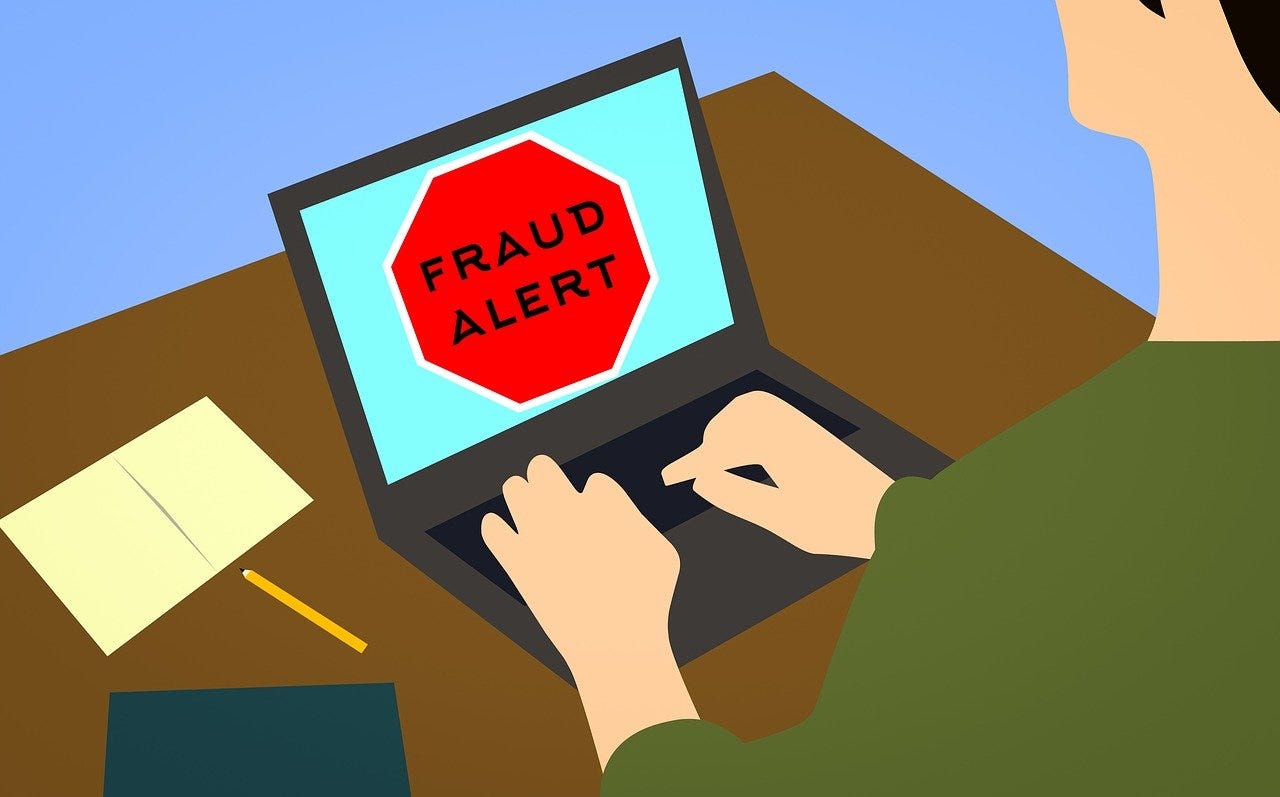E-Transfer Scams Are on the Rise. Here’s How to Protect Yourself.
These scams tricking sellers into sending money instead of receiving it. Here’s how it works, and what to check before accepting your next payment.
The other day, my Mom, Gail, read a warning from the local RCMP in the local newspaper that made her pause. She’s house-sitting for the winter on Vancouver Island. She came across the warning about a scam targeting people selling items on Facebook Marketplace.
I found the same warning posted to their website.
She doesn't use Facebook, but it mentions e-transfers, which she is familiar with. She asked me if I knew about it, and if it's something she needs to be worried about, so we had a chat.
It turns out that this is a pretty nasty scam. Sellers think they’re getting paid, but instead, they’re sending money, and this gives the scammers access to their bank accounts and even having their banking details altered. The scam has already cost people thousands of dollars.
"The RCMP is warning about scams targeting sellers on Facebook Marketplace," Gail read from the newspaper. "They’ve received multiple reports from people who thought they had received e-transfers for items they were selling online, but in reality, the transactions were fraudulent. Some people even had unauthorized withdrawals from their accounts."
How the Scam Works
It starts off like any normal Marketplace sale. Someone wants to buy your item and offers to send an e-transfer. So far, so good, right? But here’s where things go sideways:
1⃣ You get an e-transfer notification that may even look legitimate.
2⃣ If you follow the steps to accept it, clicking or tapping a fraudulent link in an email or text message. Instead of receiving money, you unknowingly authorize a withdrawal.
3⃣ In some cases, scammers get into your account and change your personal banking information.
"That’s nasty," I told her. "A lot of people won’t even realize what’s happening until it’s too late."
How to Protect Yourself
If you’re selling anything online—whether it’s a laptop, an old couch, or a pair of shoes—it’s worth taking a few extra precautions:
Verify payments properly. "Always log into your bank separately to confirm an e-transfer is fully received before handing over the item," Gail read from the article.
Avoid clicking or tapping on suspicious links to accept payments. Instead, open your banking app or log in through your bank’s official website. Scammers use malicious links to trick you into approving transactions you don’t want to go through with. Check it. If it looks odd, don't tap or click it. Log into your bank directly to approve or send an e-transfer.
Cash is still king for in-person sales. If it’s safe to do so, meet in a public place and take cash instead of digital payments. Alternatively, consider using a trusted online payment method like PayPal Goods & Services, which offers buyer and seller protection.
Set up automatic deposit for e-transfers. I told my mom, "if someone is selling online a lot, it might be worth setting up automatic deposit for e-transfers. That way, no links or extra approvals are needed, and a withdrawal can't happen that way."
Monitor your accounts. Regularly check your banking details for unauthorized changes or suspicious transactions. If something looks off, contact your bank immediately.
You can find more details and steps on the ATB website.
Scam or Just a Safe Transaction?
After reading the article, my Mom had another question:
"I don’t sell anything online, but I wanted to tell you about it because the idea of e-transfers and scams makes me nervous," she admitted. "I wasn’t sure if this applied to things like refunding our tenants' damage deposit."
I reassured her that those kinds of payments are different.
"When you’re sending money to someone you know—like the tenants—or they're sending money to you, it’s a direct e-transfer to or from your bank. The scam happens when someone sends you what looks like an e-transfer, but it's actually a malicious link tricking you into sending money instead."
Stay Safe When Selling Online
Selling online can be a great way to declutter and make some extra cash. Just make sure you’re actually getting paid before you hand anything over. And if something feels off, trust your instincts—because when it comes to scams, it’s better to be cautious than to learn the hard way.
Thank you so much for reading this blog post! Please consider supporting my work directly, or using Buy Me a Coffee! Your support makes my work possible.


